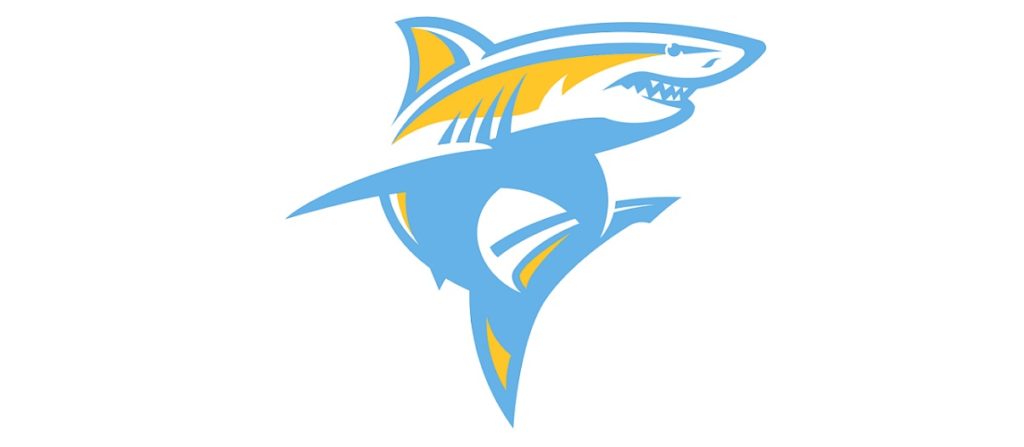
This is Part 2 of a three-part series looking at Long Island University’s impending Division I men’s hockey program.
For Long Island University, men’s hockey was always part of a plan.
The merger of the school’s Brooklyn and Post campus athletics departments created a whole host of opportunities at the Division I level, and the university had already been adding athletics programs to its stable of teams.
Still, nothing in college hockey prepared the fans for the arrival of its 61st team in late April. That’s when the Sharks announced men’s hockey would join its fold and begin play in the fall of the upcoming 2020-2021 season.
“I think we realized that this was going to have a major impact,” athletic director Dr. William Martinov said. “Long Island fans and people who follow pro hockey have always had discussions about having hockey on Long Island. When we started our women’s program (last year), I think people believed we would eventually grow to (have) a men’s team, (but) I think the announcement drew attention.”
LIU’s new program stems directly from a university-based initiative to grow its athletics over a longer term. Men’s ice hockey joins women’s gymnastics, which was added in March, as part of larger growth of new programs like fencing and rugby. It’s also a specific counterpart to the women’s program that jumped on the ice as a new program last season.
“(Head coach Rob Morgan) recruited and put together a program (in women’s hockey),” Martinov said. “It’s a reason why we wanted to do this, though the women’s success didn’t necessarily push us (to add men’s hockey). It’s been a longer-term plan that has the support of our university’s president, Kimberly Cline.”
Athletics-based growth is nothing new to higher education, and the hockey world is no stranger to schools using it as a piece of the puzzle. Robert Morris University, for example, took that approach in the mid-2000s when it added men’s hockey as part of a five-sport growth for its Pittsburgh-based campus.
“(Adding hockey) was admissions-based for us,” RMU coach Derek Schooley said. “We started off with eight scholarships in the first year because the school wanted to increase enrollment. We added women’s hockey, field hockey and men’s and women’s lacrosse along with men’s hockey, and I brought in 32 players for the 2004-2005 season (to the men’s team).”
The Colonials are now one of college hockey’s best examples of that mindset’s evolution. They joined College Hockey America for the start of the 2004-2005 season after Findlay dropped hockey but lost 20 games in their first year. By its fourth season, RMU steadily improved to an over-.500 team and finished as the runners up to the CHA championship twice.
That startup set the tone for an incredibly successful run through the 2010s. The Colonials transitioned to Atlantic Hockey in 2010 after the CHA disbanded, and they advanced to their first NCAA tournament in 2014. RMU claimed successive regular season championships in 2015 and 2016 and continued its postseason run by advancing to six consecutive conference championship weekends. The team would have contended for a seventh straight berth in this year’s quarterfinals if the postseason wasn’t prematurely ended.
“At the time, Robert Morris wasn’t a household name in hockey,” Schooley said. “We had to spread the word. We had to tell people where we were located because there’s a Robert Morris University in Illinois. I had one recruit that first year end a call by saying, ‘It was nice talking to you, Mr. Morris.’ People know Robert Morris now because of our athletics programs, but in 2003, we had to explain it a little bit better.”
RMU’s philosophical details don’t cleanly match LIU, but the schools are a far cry from the hockey scene explosion caused by both Penn State and Arizona State. They represent the latest two teams prior to LIU, and both added the sport to strengthen nationally-recognized brands. Their approach is a contrast, but it offers unique pillars and silos from which to analyze situations harboring completely different values.
“We had the best of both worlds,” Penn State head coach Guy Gadowsky recalled. “We had a freshness and excitement, but we also had people who wanted to be part of a wonderful brand at Penn State. It’s a huge school, and college sports fans know very well how passionate and supportive Penn Staters are. A lot of people just wanted to be a part of Penn State hockey. We really looked at it as the best of both worlds.”
“Everyone sees the pitched fork and knows what it represents,” Arizona State head coach Greg Powers said. “Arizona State has one of the largest alumni bases in the entire world, so everywhere we go draws a lot of fans, especially in a place like New England.”
Tying the approaches to outcomes draws a line item through the discussion of dollars. Both Arizona State and Penn State saw powerful opportunities and flexed their muscles in fundraising. Most notable was the $100 million gift from the Pegula family to the Nittany Lions that elevated the club team to Division I status and earmarked funds for a 6,000-seat arena.
“That gift from the Pegulas is everything to us,” Gadowsky said. “No one is under any false understanding that we had a chance without them. That said, once the gift was announced, there was an unbelievable response from alumni and not just from hockey. It was the athletic department alumni, basketball, football, university alumni. The response supplanted that gift because the passion really wanted to put us over the top. That said, it was known a large portion of the gift was going to the arena. That gift is everything.”
Arizona State, meanwhile, received $32 million, the largest donation in the history of the Sun Devils athletic department. It didn’t include money for a facility but helped offset required Title IX compliance spending. In 2015, the university added both a women’s triathlon and women’s lacrosse program, a direct result of the donation that helped bring men’s ice hockey into the Division I fold.
“I loved what we were doing, and I believed it could be elevated to the highest level,” Powers said. “Once we had an athletic director who supported that and believed in it, everything came together. We received the $32 million donation, and that made (the transition to Division I) happen. We had been tremendously successful as a club team, and that success at the lower level gave everyone the belief that we could be successful at the Division I level.
It’s an unfair comparison for any school to measure against power conference brands like Arizona State or Penn State, and no hockey program requires a sizable donation in order to step on the ice. To this point, LIU is using its future hockey prospects to generate grassroots fundraising. Its program approach is diving into Long Island, which itself is a rich hockey market, to develop strong local ties over a nationalized approach.
“Fundraising is always important at all levels of college sports,” Martinov said. “We don’t have men’s hockey alumni that we can go to for that kind of support, so we have to go elsewhere. We know locally that there’s interest from local people and programs. We need to fundraise, but we’re going to look into anyone that wants to promote college hockey.
“We’re going to be the one Division I program on Long Island. That’s brought a lot of attention. Our success will be through partnerships and collaborations through benefactors and anyone that really loves the game. We’re going to work on fundraising so we can involve those people who are hungry for the game.”


